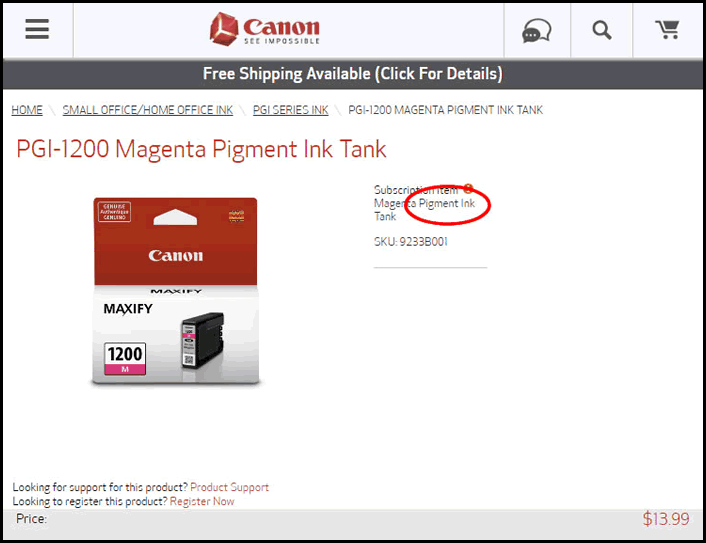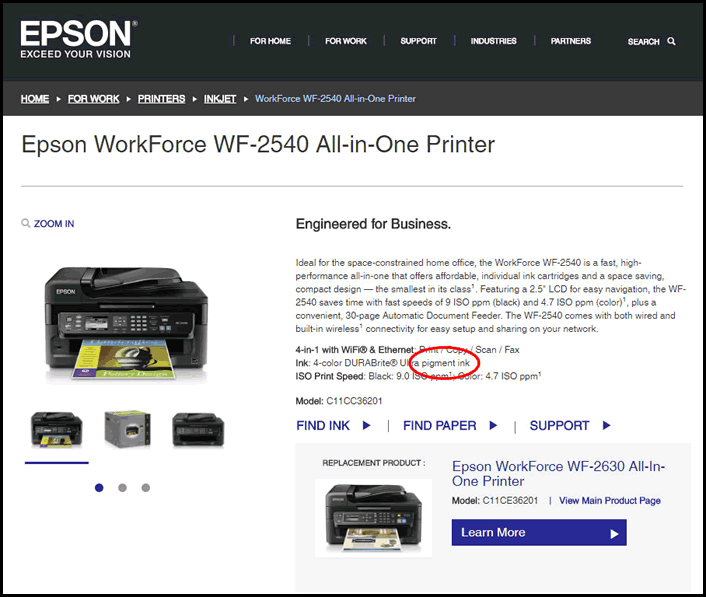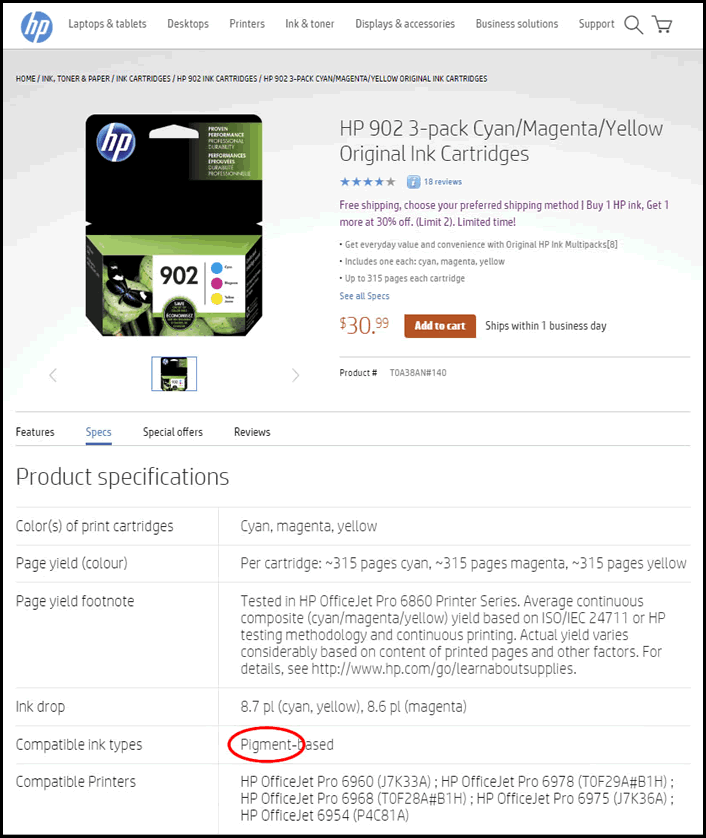Tips for Using PuffinPaper
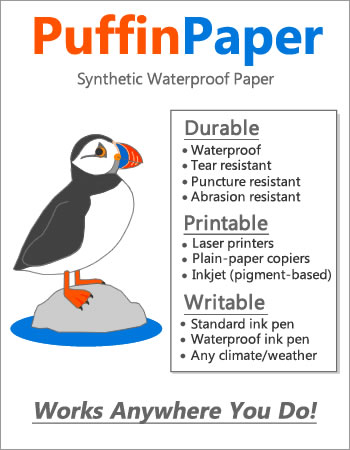
Get top performance when your paper, printing method and writing implement are compatible with one another and also with your environment of anticipated use.
Laser Printer and Plain-Paper Copiers apply toners that work superbly with PuffinPaper. Laser and copier toners consist of tiny particles that enter pores in the paper and lodge there. They are not prone to smearing in contact with water and resist fading in sunlight.
Inkjet Printers with Pigment-Based Inks also work great with PuffinPaper. Most office-grade inkjet printers ship from the factory with pigment-based ink cartridges. Pigment inks do not smear in contact with water and resist fading in sunlight. This is exactly what you want when printing a document for outdoor use.
It is easy to determine if your cartridges contain pigment-based inks. Just check the package that your cartridge was shipped in or the webpage where it was sold. Pigment-based inks are high quality inks and cartridge manufacturers love to brag about it. See screenshot examples of what to look for at the bottom of this page. You can also contact the manufacturer or the store where your cartridges were purchased.
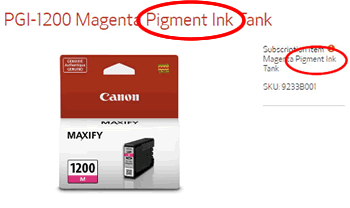
Determining if your inkjet printer is using a pigment-based ink is usually easy. Check the package for a statement about "Pigment Ink". If you don't have the package find a webpage where the cartridge is offered for sale and look for an indication of "Pigment Ink". The example above is for a Canon cartridge. You can see more examples at the bottom of this page.
Apply a Minimal Amount of Toner or Ink for best results. A light application of toner or ink will usually be absorbed by the paper. Heavy applications might be too much for the paper to absorb and can smear. Apply a small amount of ink or toner by setting your printer to "light," "economy," "draft," or a similar setting.
Use an Appropriate Pen. Most standard ballpoint pens perform well with PuffinPaper. Pens that write with waterproof ink work even better. Gel pens are not recommended because they often smear in contact with water. PuffinPaper does not accept pencil.
Use a "Medium" Width Pen. "Broad" point pens often apply more ink than the paper can absorb. "Fine" point pens sometimes dig into the paper. Medium usually works best.
Test Before Important Projects. We always recommend testing to be sure that your paper, printing method, ink/toner and writing implement will perform well together in the environment of anticipated use.
You can purchase PuffinPaper and find more information HERE.
How to Identify Pigment-Based Inkjet Cartridges
